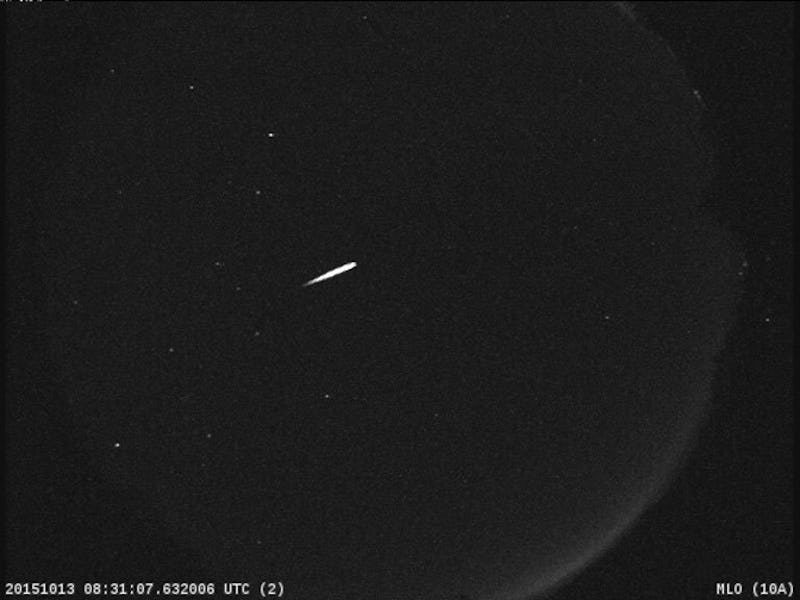You need to see the Orionid meteor shower before it leaves the sky this week
Lighting up the night sky this week is the most prolific meteor shower of the year.

CELESTIAL OBJECTS COME AND GO FROM OUR VIEW IN THE NIGHT SKY. Whether it be the Full Moon, a meteor shower, or just the best night to see Mars, we're here to direct your eyes skyward and tell you to look up and appreciate the wonders of space from Earth.
This week, we're asking you to marvel at the beauty of the Orionid meteor shower, which peaks this week in what is perhaps the greatest greatest light show to regularly grace our skies.
The Orionid meteor shower takes place every year sometime between October 2 till November 7, when the Earth's orbit passes through the rocky debris of Halley's Comet.
Halley's Comet, as pictured in January 2010.
This year, the Orionid meteor shower will peak over the course of Tuesday, October 20 and continue through to Thursday, October 22.
Meteor showers are created from the bits of debris that fall from comets and asteroids. As these rocky bodies of frozen gas, dust, and other material travel toward the Sun, the star's powerful gravitational pull can weaken them, breaking them apart as they draw near.
The dust that trails off from comets forms into a trail around their orbits and Earth passes through these trails each year during its orbit around the Sun. These interstellar travelers are made up of material that likely dates back to the formation of the Solar System, making them important fonts of information about how our cosmic neighborhood came to be. Crucially, some of that dust interacts with Earth's atmosphere and disintegrates — forming the fiery streaks that we observe in the sky as meteor showers.
The Orionid meteor shower will peak this week, giving us one of the most beautiful meteor showers of the year.
Although the Orionid meteor shower is not the strongest, it is considered to be the most beautiful shower of the year. The meteor shower is also known for its speed — it races through Earth's atmosphere at a pace of 148,000 miles per hour.
The meteor shower is named after the Orion Constellation as the shower appears to originate from the point in the sky where the constellation is located. But you do not need to be staring directly at the constellation to see it.
Instead, to view the meteor shower at its peak you need to look about 30 degrees away from the constellation. The best time to see it is a few hours before dawn — and due to the Moon's current crescent state, it should be relatively easy to spot the meteors as they rain down.
At its peak, there could be some 15 meteors an hour, according to NASA.
If you live in a crowded city like New York, it is best to get as high up as possible in order to minimize light pollution. You might want to try to view the Orionid shower from a balcony or rooftop, for example.
You also want to block out any light coming from screens of electronic devices, or flashlights and allow your eyes to get accustomed to the darkness for around 30 minutes before you look up.